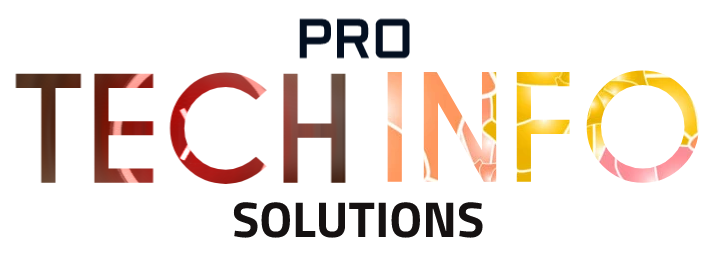As the workplace landscape evolves, so do the characteristics that define effective HRM practices. This article delves into the nine essential traits that shape modern Human Resource Management, providing insights into how these characteristics contribute to organizational excellence.
What is HRMS software?
Human Resource Management System (HRMS) software, also known as Human Resource Information System (HRIS) or Human Capital Management (HCM) software, is a comprehensive solution designed to streamline and automate various HR functions within an organization. It acts as a centralized platform integrating multiple HR processes and data, providing a unified and efficient approach to managing human resources. Superworks also provides ready made salary certificate format.
Features of HRMS software typically include:
- Employee Data Management: HRMS software centralizes employee information, including personal details, job history, skills, and performance data. This ensures the accuracy, accessibility, and security of employee records.
- Recruitment and Applicant Tracking: HRMS facilitates the recruitment process by automating job postings, applicant tracking, resume parsing, and candidate communication. This streamlines the hiring workflow and improves the overall recruitment experience.
- Onboarding and Offboarding: HRMS systems assist in the onboarding of new employees, guiding them through paperwork, training, and orientation processes—similarly, the software aids in offboarding by managing exit procedures and documentation.
- Time and Attendance Management: HRMS automates time tracking, attendance recording, and leave management, providing a transparent and efficient way to monitor employee work hours, absences, and vacations.
- Payroll Processing: HRMS software often includes payroll management features, automating tasks related to salary calculations, tax deductions, and compliance with local labour laws. This reduces errors and ensures timely and accurate payroll processing.
- Performance Management: HRMS systems support performance appraisal processes, allowing organizations to set goals, track progress, and conduct performance reviews. This promotes continuous feedback and development.
- Training and Development: HRMS assists in planning, tracking, and managing employee training and development programs. It ensures employees access to relevant learning resources and helps organizations enhance their workforce’s skills.
- Employee Self-Service Portals: HRMS provides employees with self-service portals, allowing them to access and update their personal information, view pay stubs, request time off, and participate in performance evaluations.
- Analytics and Reporting: HRMS software generates reports and analytics based on employee data, aiding HR professionals and management in making data-driven decisions. This supports strategic workforce planning and overall organizational effectiveness.
- Compliance Management: HRMS systems help organizations comply with labour laws and industry regulations by automating compliance tracking and reporting. This reduces the risk of legal issues related to HR practices.
Strategic Alignment:
Modern HRM goes beyond administrative functions; it aligns with organizational strategies. Strategic HRM involves understanding business goals and integrating HR practices to support them. From workforce planning to talent management, strategic alignment ensures that HR decisions contribute directly to achieving overall organizational objectives.
Emphasis on Employee Development:
Successful HRM recognizes the importance of continuous learning and development. Prioritizing employee training programs, mentorship, and skill-building initiatives enhances individual growth and ensures that the workforce remains adaptable and well-equipped to meet evolving job demands.
Technology Integration:
The digital age has transformed the way HR functions. Modern HRM leverages technology to streamline processes, enhance efficiency, and improve decision-making. From HRIS (Human Resource Information Systems) to AI-driven recruitment tools, integrating technology is a characteristic that defines HRM in today’s fast-paced business environment.
Data-Driven Decision-Making:
Data analytics has become an integral part of effective HRM. Leveraging employee data for insights into performance, engagement, and retention allows HR professionals to make informed decisions. This trait ensures that HRM practices are not just reactive but are shaped by evidence-based strategies that contribute to organizational success.
Focus on Diversity and Inclusion:
Inclusive workplaces are not just ethical imperatives but also contribute to organizational success. Modern HRM actively promotes diversity and inclusion, recognizing the value of a diverse workforce. This includes implementing inclusive hiring practices, fostering a culture of belonging, and providing equal opportunities for career growth.
Adaptability and Change Management:
HRM must be agile and adept at managing change. Whether it’s organizational restructuring, technological advancements, or shifts in market dynamics, HR professionals play a crucial role in facilitating smooth transitions and ensuring that employees navigate change successfully.
Employee Engagement Strategies:
Modern HRM emphasizes employee engagement, employing regular feedback mechanisms and recognition programs, and fostering a positive work culture. Engaged employees contribute to a thriving workplace and positively impact organizational outcomes.
Check this also : Relieving letter
Legal Compliance and Ethical Practices:
Maintaining compliance with labour laws and ethical standards is non-negotiable in HRM. This characteristic ensures that HR practices are aligned with legal requirements, promoting fairness and equity within the organization. Ethical HRM practices build trust among employees and stakeholders, contributing to a positive organizational reputation.
Effective Communication:
Communication is the backbone of HRM. Effective communication ensures that everyone is informed and aligned, from disseminating policies and procedures to facilitating open dialogue between management and employees. Modern HRM goes beyond traditional communication methods, leveraging digital tools and platforms for seamless interaction.
Conclusion
In conclusion, the traits that shape modern human Resource management practices are multifaceted and dynamic. From strategic alignment and technology integration to a focus on diversity, inclusion, and ethical practices, effective HRM is a holistic approach that goes beyond administrative functions. As organizations navigate a rapidly changing business landscape, recognizing and embodying these key characteristics ensures that HRM remains a driving force behind organizational success. Embracing these traits allows HR professionals to meet the challenges of today and proactively shape the future of work.
Moreover, HRM in contemporary organizations actively seeks to foster a culture of continuous feedback. This involves the traditional performance appraisal, regular check-ins, constructive feedback, and a culture that encourages employees to voice their concerns and ideas. This open communication channel promotes transparency and ensures employees feel valued and heard.

